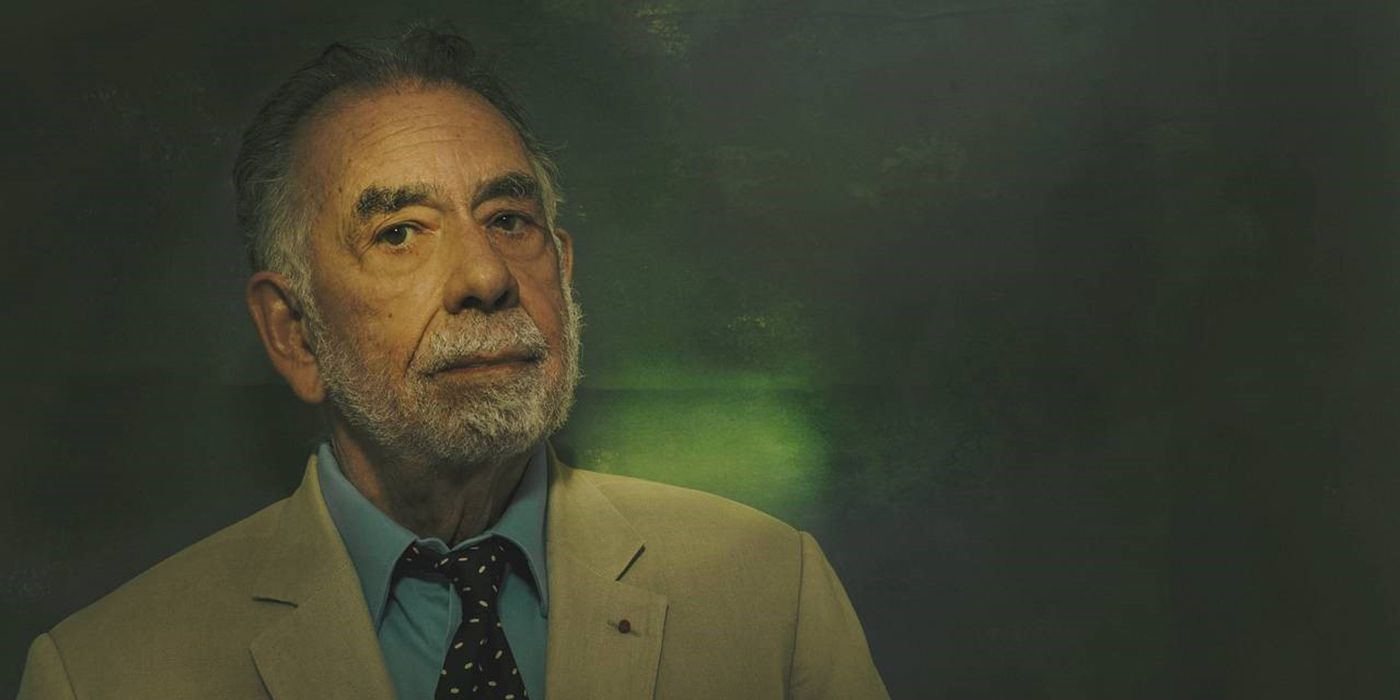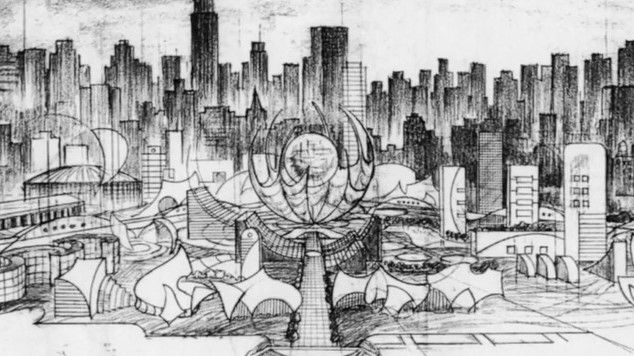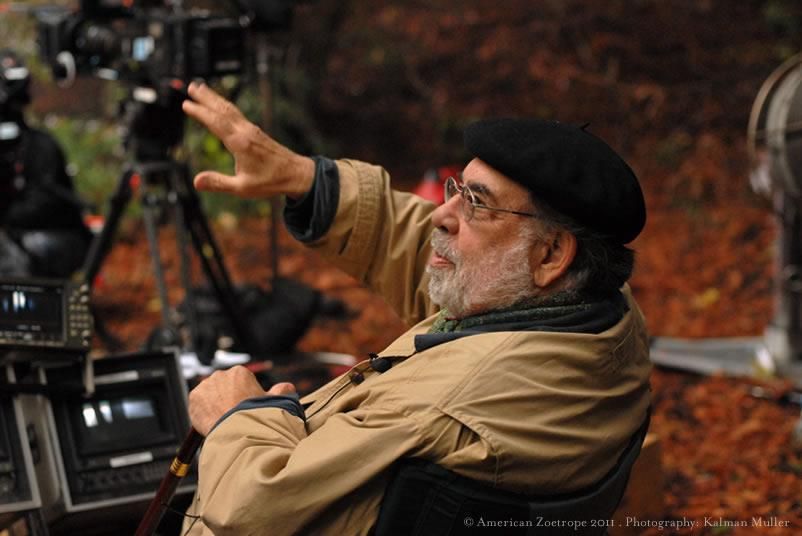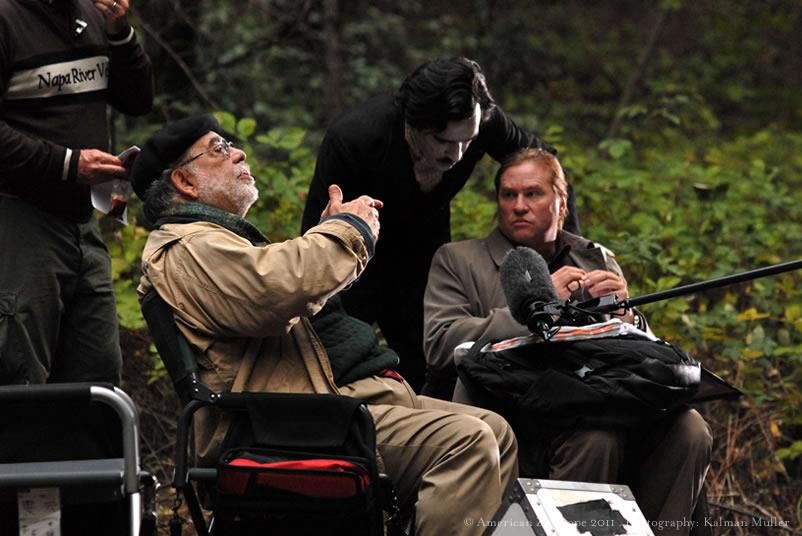Every filmmaker has their passion project. Often these take the form of high-concept and higher-budget productions that cross the line between artistic pursuits and commercial viability with such determination they are almost guaranteed to never get the backing of a major studio — at least not without serious compromise and a proven back catalog of box-office successes. This isn’t to say that such films are impossible to get made. Martin Scorsese fought for decades to make The Last Temptation of Christ and Silence, and eventually succeeded without jeopardizing his original vision. But the financial motivation that dominates the headspace of Hollywood producers has left many of these projects to simply gather dust in the dreams of cinephiles.
One such project is Megalopolis, a sci-fi epic courtesy of Francis Ford Coppola that began production in November 2022, a whopping 40 years after work first commenced on its script. Quite what the film is remains shrouded in mystery, but broadly we know that it’s a love story set in a futuristic New York (albeit one modeled on Ancient Rome) that explores deep philosophical questions about humanity and the nature of our society. Its genre, title, and premise display a clear influence from Fritz Lang’s silent masterpiece Metropolis, and given Coppola's desire for it to be a modern-day classic that we’ll all gather to watch as a yearly tradition, there’s no doubt that he wants Megalopolis to be included in the pantheon of such films. An aspiration of this scale sounds like the definition of putting the cart before the horse, but at the same time, it’s hard not to admire his infatuation with this project.
What's Taken So Long for 'Megalopolis' to Get Underway?
For decades, it seemed that Megalopolis would only exist on “greatest unmade films” lists alongside Stanley Kubrick’s Napoleon and David Lynch’s Ronnie Rocket, and despite Coppola’s enthusiasm for the film, even he seemed to have resigned himself to never getting it made. However, May 2019 brought the news that development was back in full swing, and three years later the cameras finally started rolling on one of the most legendary what-ifs in cinematic history. Filming is scheduled to conclude in March 2023, and while we shouldn’t be too hasty to celebrate its impending release, hopefully we won’t have much longer to wait. (If there’s one lesson to be learned from Terry Gilliam’s equally troubled film The Man Who Killed Don Quixote, it’s that nothing should be taken for granted.)
But why has Megalopolis taken so long? Rather predictably, the answer comes down to money, although not necessarily in the way you might be imagining. Coppola began developing the film in the early 1980s which, in hindsight, was just a few years too late. His work in the 1970s is the stuff of film legend, and his back-to-back successes with The Godfather, The Conversation, The Godfather Part II, and Apocalypse Now gave him the go-ahead for pretty much anything. Unfortunately he chose One from the Heart, a film whose monumental failure at the box office (earning a mere $636,796 against a budget of $26 million) plunged him into a decade of financial turmoil that effectively locked him into studio-friendly films until he had paid off his debts. There was also the overhanging issue of Apocalypse Now — more specifically, its notoriously difficult shoot that had dragged on for over a year and almost killed its lead actor (to name but a few of its problems). While the resulting film had been widely acclaimed, it’s hard to imagine any studio looking at Coppola and not harboring fears about a possible repeat — an issue compounded by the large budget Megalopolis would require.
Jump forward 10 years and the success of more commercial ventures like The Godfather Part III and Bram Stoker’s Dracula had allowed Coppola to dig himself free from his monetary woes. It didn’t take long before his sights were on Megalopolis once again, but the shift in decades was not about to make it any easier to get such an ambitious project made. Few studios were interested, and those that were only gave feedback related to its “financial or pop-value” — comments that Coppola felt denigrated its artistic merits. When it became clear that Hollywood would be unwilling to back the film, he decided to fund it himself. Before long he was back on the commercial train and directing films like Jack and The Rainmaker primarily (but not exclusively) to raise money for Megalopolis, and as one century gave way to the next he had just about achieved that goal. Cinematographer Ron Fricke was hired to shoot second-unit footage of New York City, and Coppola began holding table reads with some of Hollywood’s most famous names like Robert De Niro, Leonardo DiCaprio, and Uma Thurman. Megalopolis was finally getting made.
Just When Coppola Thought the Time Was Right...
At least until disaster struck. The events of September 11th, 2001, put an immediate halt to production, and for a time it looked like the film would never recover. Since New York is essentially the main character of Megalopolis, the prospect of resuming production in the aftermath of such a seismic event (especially since the film’s plot is about the city being rebuilt following its near destruction) was unthinkable. In the end it was decided the film would be abandoned, a decision that must have pained Coppola, but was probably for the best considering the tragedy that had struck the world. But no one can just move on from a 20-year-long project like it was nothing, and in interviews he compared his time with Megalopolis to being in love with someone who didn’t want him back. Despite his attempts to break free from its grasp with films like Youth Without Youth and Tetro, it’s clear a part of him was still hung up on the past, dreaming about what could have been.
Production Finally Moves Forward
With this in mind, it shouldn’t be surprising that he would make one last attempt to get Megalopolis off the ground. What should be surprising, however, is that this time it actually worked. By 2019 enough time had elapsed since 9/11 to make its story more acceptable to a general audience, and when combined with the rapidly changing landscape of film that meant high-concept productions were no longer beholden to major studios, it was clear there had never been a better time to make Megalopolis. Cutting-edge technology is becoming more widespread by the day, and while Coppola may not have directed a hit for decades, his name still carries enough weight to earn him an audience with pretty much any actor he wants. Equally, few actors would turn down the opportunity to work with him. Countless names were tossed around between its re-announcement and the start of filming, with the final cast consisting of Adam Driver, Forest Whitaker, Jon Voight, Laurence Fishburne, Nathalie Emmanuel, and Dustin Hoffman (among others) — a dizzying selection that’s enough to catch anyone’s attention.
However, there was still the $100 million-plus budget to consider, and it’s here where Coppola's passion crossed the line from genius to madness. Fed up with groveling to studios, Coppola has decided to cover the cost himself, his late-career resurgence as a winemaker earning him a sizeable enough fortune with which to bankroll pretty much anything he wants. It’s a hell of a gamble, and considering that the film currently lacks a distributor (plus the complex nature of its visual effects), Megalopolis’s costs could easily spiral out of control before it’s ready for public viewing. Not that Coppola seems concerned. This is a story he believes in – not just on a personal level but from a wider societal perspective too, and it’s unlikely the 83-year-old filmmaker would allow his dream to collapse when it’s this close to being realized.
Coppola never fit into the Hollywood mold, anyway. He was one of the leading figures in New Hollywood for a reason, and even when he was making some of the best films ever made, he was still battling producers and restrictions at every turn. That he was able to make something as audacious as Apocalypse Now within the confines of Hollywood is astonishing, but this success was never going to last. His previous attempts to free himself from this system may have failed, but his passion for truly auteur-driven filmmaking never faded. It’s fitting that his greatest passion project would be made independently, and even if doesn’t live up to 40 years of anticipation, the sheer fact that it’s even getting made is worth celebrating. Megalopolis is among the riskiest bets in the history of film, but to Coppola it’s just a story that deserves to be told. If there’s any sentiment that sums up his career, it’s that.




